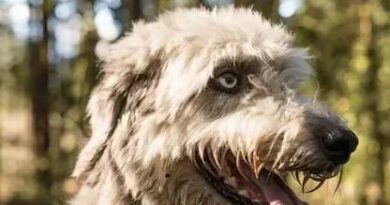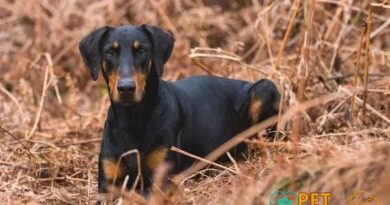What is: Alopecia areata in dogs
What is Alopecia Areata in Dogs?
Alopecia areata in dogs is an autoimmune condition that leads to hair loss in patches. This condition can affect dogs of any breed, age, or gender, and it is characterized by sudden, localized areas of hair loss. The skin in the affected areas typically appears normal, without any signs of inflammation or irritation. Understanding this condition is crucial for dog owners who notice unusual changes in their pet’s coat.
Causes of Alopecia Areata in Dogs
The exact cause of alopecia areata in dogs remains unclear, but it is believed to be linked to genetic predispositions and immune system dysfunction. In this condition, the immune system mistakenly attacks the hair follicles, leading to hair loss. Stress, hormonal changes, and environmental factors may also play a role in triggering this condition. Identifying the underlying cause is essential for effective management and treatment.
Symptoms of Alopecia Areata in Dogs
The primary symptom of alopecia areata in dogs is the sudden appearance of bald patches on the skin. These patches can vary in size and may occur on any part of the body. While the skin in these areas usually remains healthy, some dogs may experience mild itching or irritation. It’s important for pet owners to monitor their dogs closely for any changes in their coat or skin condition, as early detection can lead to better outcomes.
Diagnosis of Alopecia Areata in Dogs
Diagnosing alopecia areata in dogs typically involves a thorough physical examination by a veterinarian. The vet will assess the pattern and extent of hair loss and may perform skin scrapings or biopsies to rule out other skin conditions. Blood tests may also be conducted to evaluate the dog’s immune system and rule out underlying health issues. A definitive diagnosis is crucial for determining the appropriate treatment plan.
Treatment Options for Alopecia Areata in Dogs
Treatment for alopecia areata in dogs may vary depending on the severity of the condition and the individual dog’s needs. In many cases, the hair may regrow on its own without intervention. However, veterinarians may recommend corticosteroids or other immunosuppressive medications to help manage the immune response. Additionally, topical treatments and supplements may be suggested to promote hair regrowth and improve skin health.
Managing Alopecia Areata in Dogs
Managing alopecia areata in dogs involves regular veterinary check-ups and monitoring the dog’s condition. Pet owners should maintain a healthy diet and provide appropriate grooming to support their dog’s overall skin and coat health. Reducing stress and ensuring a stable environment can also be beneficial. In some cases, behavioral therapies may be recommended to help dogs cope with stressors that could exacerbate the condition.
Prognosis for Dogs with Alopecia Areata
The prognosis for dogs diagnosed with alopecia areata is generally positive. Many dogs experience spontaneous regrowth of hair within a few months, especially with appropriate treatment and management. However, some dogs may have recurrent episodes of hair loss throughout their lives. Regular veterinary care and monitoring can help manage the condition effectively and improve the quality of life for affected dogs.
Preventing Alopecia Areata in Dogs
While there is no guaranteed way to prevent alopecia areata in dogs, maintaining a healthy lifestyle can help reduce the risk. Providing a balanced diet, regular exercise, and minimizing stress can contribute to overall well-being. Additionally, keeping up with routine veterinary care can help identify potential health issues early, allowing for timely intervention and management of any emerging conditions.
Common Myths About Alopecia Areata in Dogs
There are several myths surrounding alopecia areata in dogs that can lead to misunderstanding. One common myth is that this condition is contagious; however, alopecia areata is not infectious and cannot be transmitted between dogs. Another misconception is that alopecia areata is solely caused by poor grooming practices. While grooming is essential for coat health, this condition is primarily related to immune system dysfunction and genetics.
When to See a Veterinarian
Pet owners should consult a veterinarian if they notice any sudden changes in their dog’s coat, including patchy hair loss. Early intervention is key to managing alopecia areata effectively. Additionally, if the dog shows signs of discomfort, such as itching or irritation, a veterinary visit is warranted to rule out other skin conditions and determine the best course of action.




